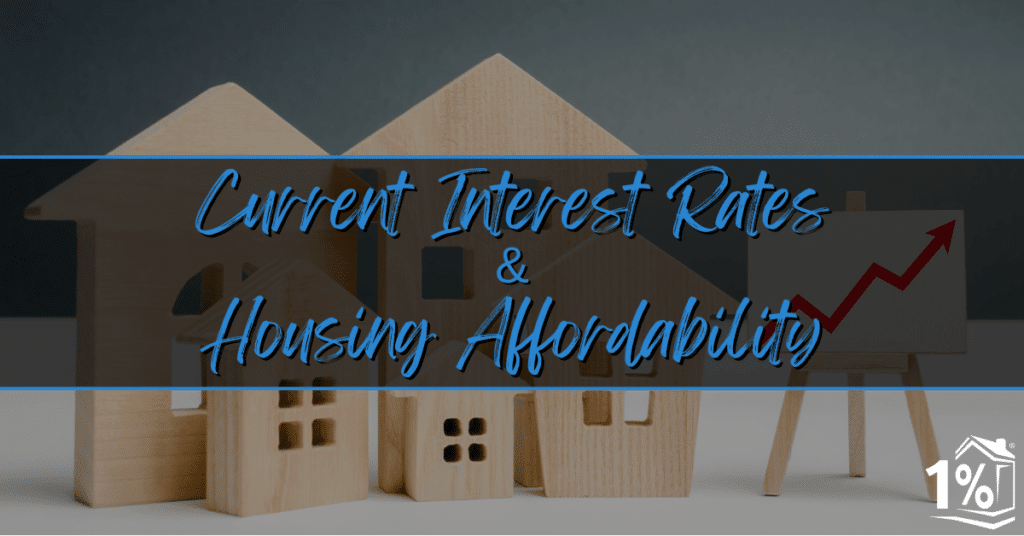How Current Interest Rates Affect Housing Affordability
The housing market has experienced a significant surge in demand in recent times. This has led to a rapid increase in prices across the country. Additionally, with interest rates on the rise, many people are left wondering whether they can still afford to buy a home.
However, it’s important to put this situation into context by considering the historical trends of interest rates. Even with the recent upward trend, the current rates of 6-7% are still historically low. Consequently, many Americans can still achieve homeownership.
In this article, we will take a closer look at the current state of housing affordability in light of interest rates. We’ll examine the fluctuation of interest rates over time and how they’re determined in the market. Additionally, we’ll explore how housing affordability is determined and the feasibility of homeownership in the current market. Finally, we’ll look into the potential future of interest rates and what they could mean for buyers.
It’s essential to understand the relationship between interest rates and housing affordability to make informed decisions about purchasing a home. This is true whether you’re a first-time buyer or an experienced investor. With that said, let’s delve into the current state of the housing market.
Historical interest rates
For many years, interest rates have played a critical role in the housing market. And their historical context reveals significant fluctuations over time.
According to Freddie Mac data, interest rates peaked in 1981, with an average of 16.63%. However, individual rates varied based on factors such as location, credit score, and lender. At that time, some borrowers experienced rates as high as 18-20%. In contrast, interest rates reached historic lows in the 2010s through 2022, with some lenders offering rates below 3%.
Currently, interest rates for home loans are hovering around 6-7%. While this is higher than in recent years, it’s still relatively low compared to historical rates. The impact of interest rates on the housing market has been significant in the past.
When rates are high, it becomes more expensive to borrow money to purchase a home. As a result, demand decreases, which can potentially cause home prices to fall. Conversely, when rates are low, it becomes more affordable to borrow money. This leads to an increase in demand and potentially higher home prices.
Interest rates can also influence the types of loans available to borrowers. For instance, when rates are low, adjustable-rate mortgages (ARMs) may become more popular. These types of loans offer lower rates for a set period before potentially adjusting upward.

How current rates stack up
Although current rates are slightly higher than the lows seen in recent years, they remain low when compared to historical rates. As a result, homeownership is still a feasible option for many Americans. As of April 20, 2023, the average interest rate for a 30-year fixed mortgage was around 6.96%. For a 15-year fixed-rate mortgage, it was approximately 6.30%.
Various factors determine interest rates, including inflation, economic growth, and the supply and demand for money. The Federal Reserve plays a vital role in setting interest rates through its monetary policy decisions. During times of economic hardship, the Federal Reserve may lower interest rates to encourage borrowing and stimulate economic growth. Conversely, in periods of rapid economic growth, the Federal Reserve may raise interest rates to help prevent inflation.
Is it still affordable to own a home?
The current interest rates have made homeownership more feasible for many Americans than ever before. With rates hovering around 6-7%, it’s an excellent time to take advantage of the low rates and invest in a home.
The benefits of lower interest rates are significant and include lower monthly mortgage payments and increased affordability. A 2% decrease on a 30-year fixed-rate mortgage for a $350,000 home could save homeowners up to $110,000. This could have a significant impact on monthly payments and overall affordability.
Apart from the financial benefits, homeownership offers a range of other advantages. Firstly, it enables individuals to accumulate equity in their property over time, providing a financial cushion and potential source of wealth.
Secondly, homeownership provides stable housing costs, which is especially beneficial during periods of economic uncertainty or when rental prices fluctuate.

The future of interest rates
While current interest rates are low, it’s important to keep in mind that they may change in the future. Experts predict that interest rates will likely increase in the coming years, although it’s impossible to know for sure.
Higher interest rates could impact the housing market in various ways. For example, they may make it difficult for potential homebuyers to qualify for mortgages, or meet other financial requirements. Consequently, we may see a decline in home sales, and home prices could decrease.
Nonetheless, there are actions that prospective homebuyers can take to prepare themselves for potential changes in interest rates. Working with a reputable real estate professional is one critical recommendation. These professionals can assist in navigating the complexities of the market and understanding the consequences of fluctuating rates.
Conclusion
Understanding the historical context of interest rates and their impact on the housing market is crucial for making informed decisions about purchasing a home. Although interest rates have fluctuated over time, they are currently at remarkably low levels, creating a window of opportunity for many Americans to become homeowners. By carefully considering factors such as housing affordability, monthly mortgage payments, and potential changes in interest rates, prospective homebuyers can make informed decisions when it comes to buying a home.
At 1 Percent Lists Purple Door, we are committed to guiding our clients through the complexities of the housing market and helping them find their dream home. With our extensive knowledge of the Louisville real estate market and our unwavering dedication to providing exceptional service, we are confident that we can help you find the perfect home that fits your needs and budget.
Whether you’re a first-time homebuyer or an experienced investor, our team is here to provide you with the support you need. Contact us today to learn how we can help you achieve your homeownership goals.

